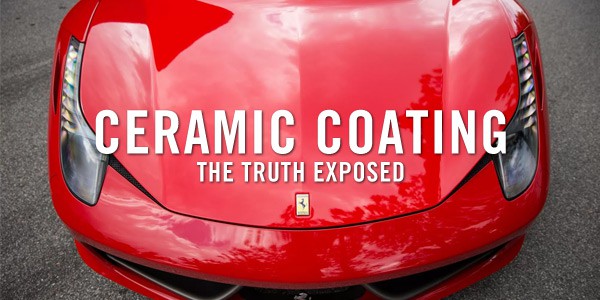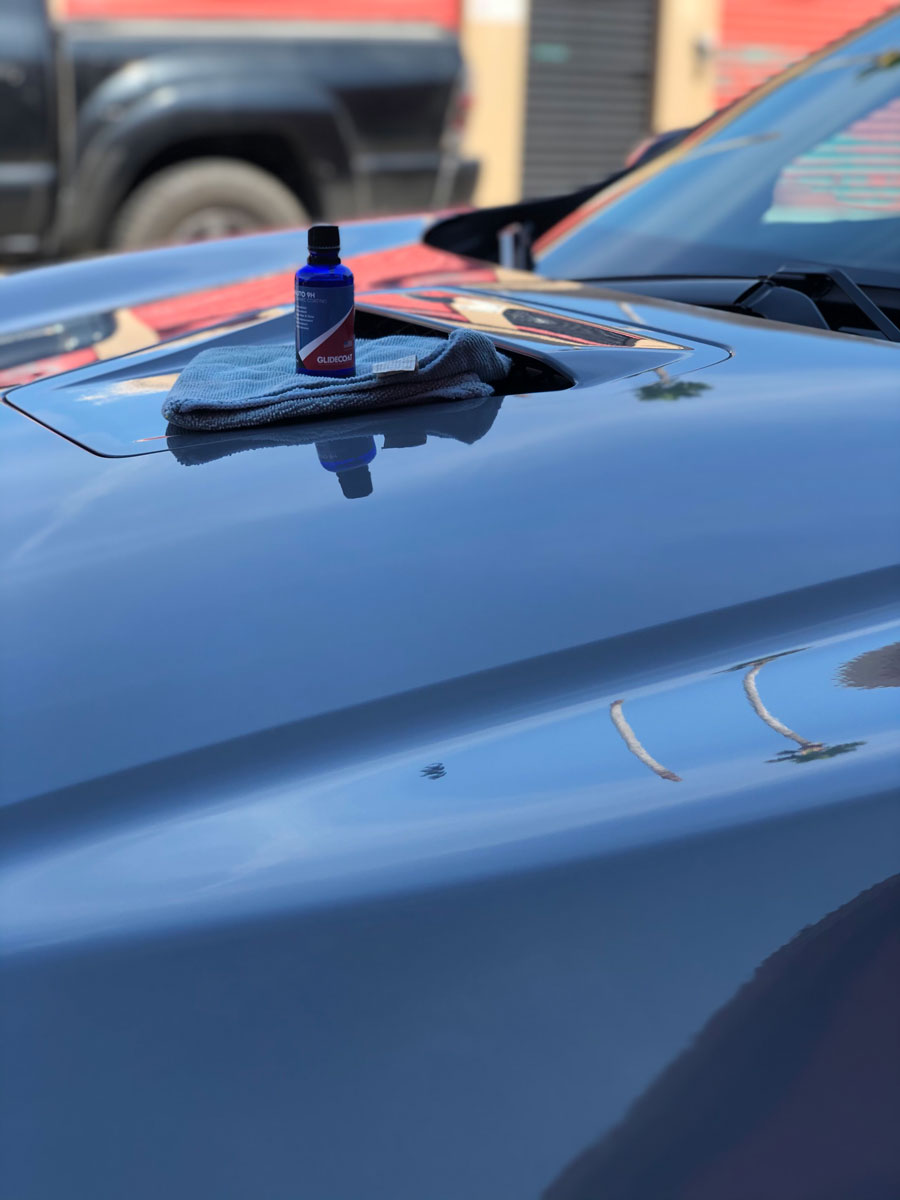How Ceramic Coating Improves Shine and Resilience for Your Car
How Ceramic Coating Improves Shine and Resilience for Your Car
Blog Article
The Duty of Ceramic Layer in Protecting Your Cars and truck's Paint From Environmental Damages
Ceramic coating has actually emerged as an advanced option for cars and truck owners looking for to preserve the honesty of their car's exterior. By establishing a robust chemical bond with the paint, this innovative modern technology offers a powerful barrier against numerous ecological hazards, such as UV rays, acid rainfall, and contaminants. However, comprehending the thorough advantages and the details of the application process is crucial for maximizing its effectiveness. As we discover the nuances of ceramic coating, it ends up being apparent that the option to apply this protective measure might considerably affect your vehicle's long life and visual.
What Is Ceramic Finishing?
Ceramic covering is a sophisticated liquid polymer put on the external surface areas of a vehicle, developed to give a sturdy layer of defense for the paint. This cutting-edge remedy develops a chemical bond with the automobile's factory paint, producing a hydrophobic and resilient shield. The finishing includes nanoparticles that fill out the microscopic flaws in the paint, leading to a smooth surface area that improves gloss and shine.
Usually, ceramic finishes are available in different solutions, permitting various levels of protection and longevity. While some products can last for numerous months, others use protection for a number of years, depending upon the density of the application and ecological elements. The application process needs meticulous prep work, consisting of washing, decontaminating, and brightening the lorry's surface to guarantee optimal adhesion of the layer.

Advantages of Ceramic Finish
Among the key advantages of applying a ceramic finish is the phenomenal protection it provides to vehicle paint. This innovative layer forms a long lasting layer that guards the lorry's surface from a selection of ecological risks, consisting of UV rays, acid rain, bird droppings, and tree sap. By supplying this durable defense, ceramic finishings dramatically minimize the risk of fading and etching, preserving the cars and truck's aesthetic appeal gradually.
In enhancement to security, ceramic finishes are renowned for their hydrophobic residential or commercial properties, which drive away water and dirt, making it much easier to preserve a clean vehicle. This self-cleaning impact decreases the regularity of cleaning, conserving both time and sources. Ceramic layers improve the deepness of the paint's gloss, resulting in a vibrant and sleek look that elevates the general look of the car.
An additional significant benefit is the long life of ceramic coatings. Unlike typical waxes or sealers that call for frequent reapplication, ceramic finishings can last several years, providing a cost-efficient service for cars and truck proprietors seeking lasting protection. In general, purchasing ceramic layer leads to enhanced longevity, reduced maintenance, and continual aesthetic charm for automotive paint.
Exactly How Ceramic Coating Functions
A ceramic finishing operates through a chemical bonding process that produces a safety layer on the car's paint surface. This ingenious option makes use of advanced nanotechnology, where tiny fragments of silica are suspended in a fluid type - ceramic coating. Upon application, these particles bond with the factory paint, developing a hydrophobic and resilient layer that improves the car's surface area
The main part of ceramic coverings, silicon dioxide (SiO2), contributes to the layer's strength and resilience. When cured, the finish changes right into a tough, glass-like surface that shields the paint from environmental pollutants such as dust, UV rays, bird droppings, and tree sap. This molecular bond results in a surface that is not only resistant to scratches yet likewise less complicated to clean up, as dirt and grime are less likely to stick.
In addition, the hydrophobic residential or commercial properties of ceramic finishes trigger water to grain and slide off, view it now lowering the chances of water places and mineral down payments. This protective barrier properly extends the life of the paint and keeps the vehicle's aesthetic charm, using automobile proprietors a resilient service for paint security.
Application Process of Ceramic Covering
When thinking about the application of ceramic coating, preparation is essential to attaining ideal results. Any type of scratches or blemishes ought to be resolved at this phase, as the layer will bond with the surface area below.

Ceramic coating is then applied in tiny sections, generally making use of an applicator pad. The vehicle must be left to treat in a regulated setting to permit the finishing to totally bond with the paint.
Long-Term Upkeep and Treatment
Achieving a successful ceramic coating application establishes the structure for long-lasting security, yet correct upkeep is crucial to preserving its benefits. Regular cleaning is necessary; using a pH-neutral cars and truck hair shampoo will help keep the finish's integrity without causing damage. Avoid automated car cleans that usage rough materials, as they can jeopardize the coating's surface area.

In addition, applying a ceramic coating upkeep spray can enhance the existing layer, providing an added increase in defense and shine. It's recommended to execute this every three to 6 months, relying on ecological direct exposure.
Finally, parking in shaded areas or making use of automobile covers can stop long term direct exposure to harmful UV rays and ecological impurities, even more expanding the life of your ceramic finish. By adhering to these maintenance methods, you can guarantee your vehicle's finish continues to be protected and visually appealing for several years to come.
Verdict
In summary, ceramic layer offers as an important safety procedure for auto paint, successfully protecting cars from a variety of environmental visit this website hazards. Its capability to produce a durable hydrophobic barrier not just boosts aesthetic appeal but also considerably minimizes the regularity and intensity of upkeep required. The resilient nature of this innovative polymer emphasizes its worth in preserving vehicle integrity and appearance, eventually adding to an extra sturdy and aesthetically attractive automotive finish.
Ceramic finish is an advanced fluid polymer used to the external surfaces of a car, designed to provide a resilient layer of protection for the paint. Ceramic finishings improve the deepness of the paint's gloss, resulting in a vivid and polished look that boosts the general appearance of the automobile.
A ceramic coating operates through a chemical bonding procedure that produces a protective layer on the vehicle's paint surface.The primary component of ceramic layers, silicon dioxide (SiO2), adds to the layer's stamina and durability.In summary, ceramic covering serves as an essential protective action for automobile paint, successfully securing vehicles from a range of environmental risks.
Report this page